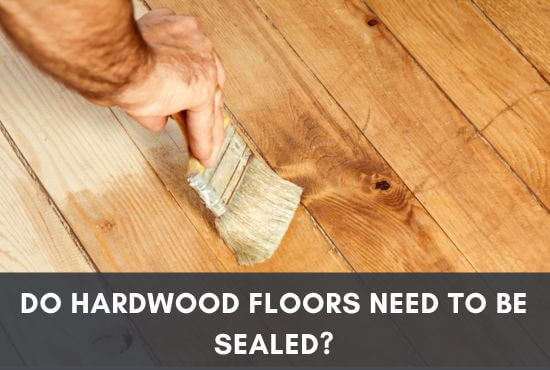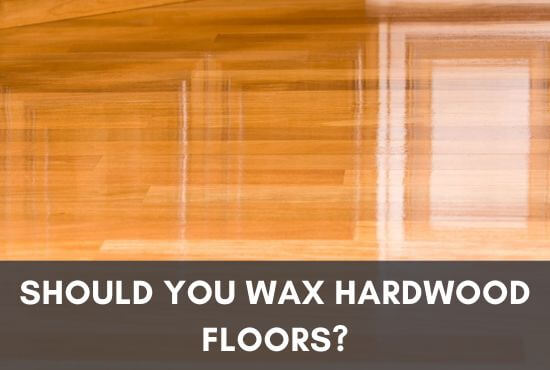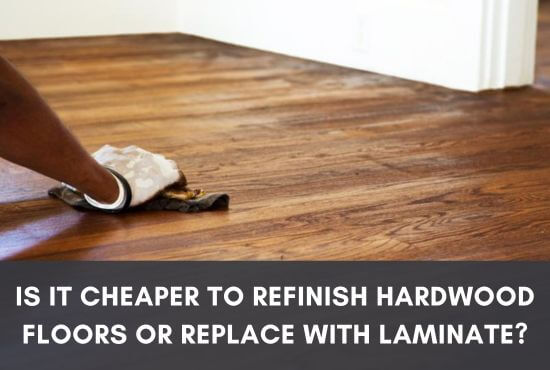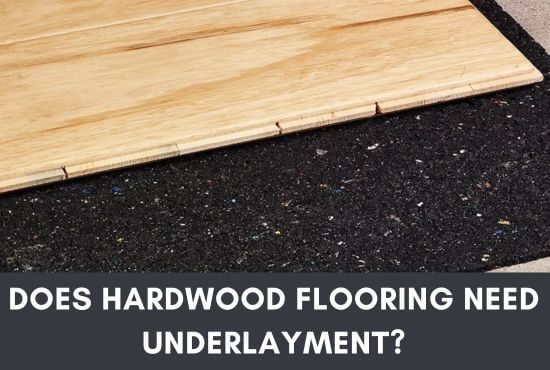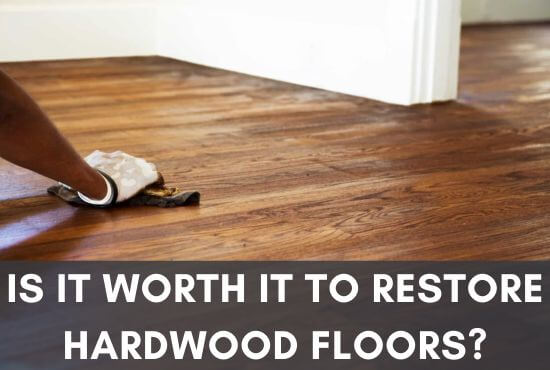If you have floating engineered floors in your house, you would be having a very lovely time as they are very easy to install and do not require too much effort.
However, just as with any other flooring, they can also get damaged as it is part of the process and no wood floors ever have been kept entirely safe. Therefore, a suitable idea is to repair the floors rather than letting them damage further or replace them. Identifying the time of damage and then addressing the problem is the best way to repair a floating engineered wood floor.
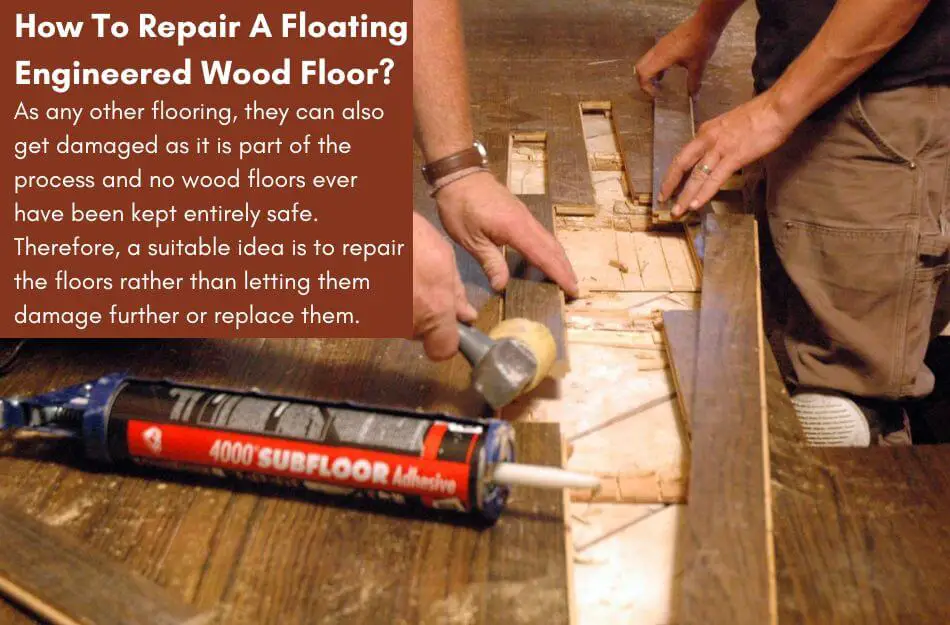
If you do not know the right way to do so, keep reading as we have a lot of useful information in this article that would be helpful in repairing your floors as well.
Table of Contents
What Is A Floating Engineered Wood Floor?
A floating floor is installed based on the tongue and groove joints rather than the conventional nailing, screwing, or gluing methods.
This type of floor has become very common lately and has received a lot of acceptance and acknowledgment in the flooring industry.
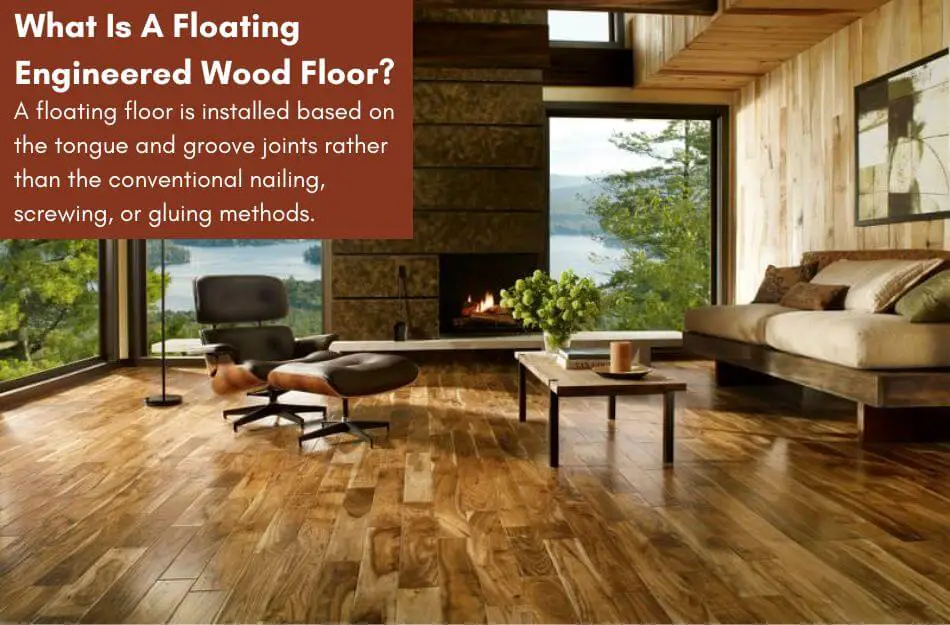
As the click lock system is straightforward to install, it saves much cost in terms of labor and material and also saves an extensive amount of time as all you need to do is connect the planks, and you have the entire flooring structure ready within an hour.
Those worrying about the integrity and stability of this type of platform will be surprised by how reliable this is.
Using this technique, the floor is one entire platform rather than separate pieces or planks.
This increases the surface area of the whole floor and prevents it from having any type of weak point which might be exploited against it.
Therefore, the surface area combined with the collective weight of the floors prevents it from moving from its place. Besides, this also provides an added level of stability and durability.
In addition, the floating floor method is usually used with underlayment to give the floors a soft effect underneath, but it is not compulsory.
However, no installation method, including this one, can completely protect the engineered wood floors from getting damaged. Hence, these floors can also sustain significant damage.
While most other users will immediately turn towards replacing their floors or administering a resurfacing process, you must wait a while.
Repairing an engineered wood floor is easily possible if you identify it at the right time and use the right method to repair it.
How To Repair A Floating Engineered Wood Floor | Covering All Aspects
You’ve come to the right place if you were also trying to find the correct answer to this question.
Having damaged engineered floating floors can become a severe tension if you do not have any prior experience with damage or if you haven’t had wooden floors before.
However, while these can be significantly avoided, they can also be fixed and repaired if damages occur accidentally or due to weariness over time.
Today, we shall guide you on the proper adaptation methods when repairing your floating engineered wood floors.
While many types of damage may occur to engineered wood floors, we will try to cover the most common and generic ones so you can work your way to the specific type of damage, as you will have the basic knowledge and guidance about repairing the floors.
Expanding Floors
Wood is known to acclimate according to the humidity levels of the area, which sometimes expands more than necessary and results in the peaking of the floors.
However, the floors can’t develop due to some obstruction, resulting in peak points forming throughout the area.
This is similar to buckling, but the only difference is that the boards do not overlap.
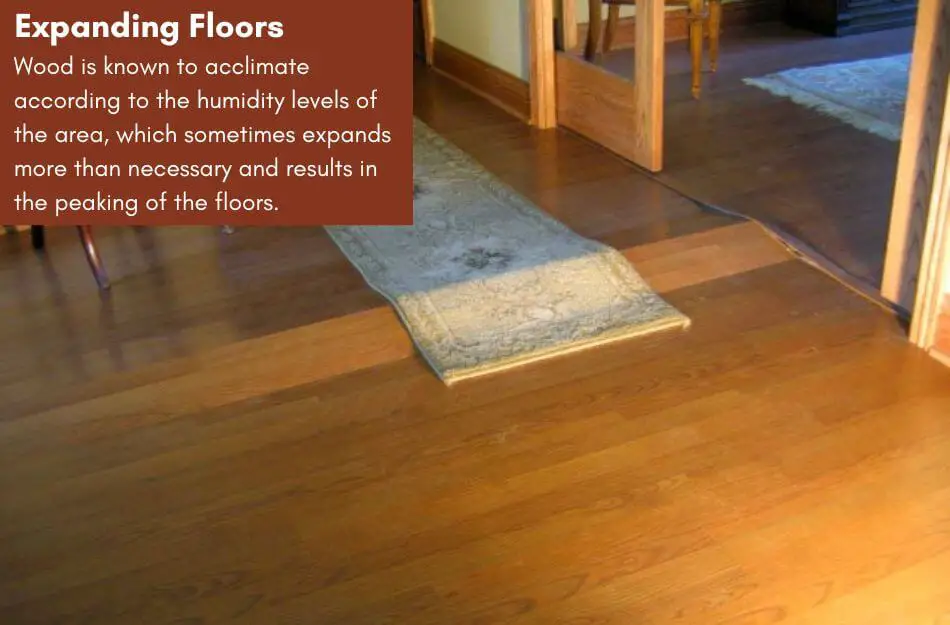
But, as the boards exert extreme pressure towards each side, the joints and locks get higher than normal, forming a peak, hence the name peaking.
While humidity seems to be one of the most common reasons for this, there are other reasons, such as moldings.
The moldings are usually found on the perimeter of the room and are often very close to the surface of the floors.
However, there are other problems and reasons that might cause the same type of issue.
But, it is not a very serious case, and with the right remedies, it can be easily fixed without causing any significant problems to your engineered wood floors.
It is never recommended to nail down or glue a floating floor as this can limit their activity and range of motion.
Floating floors are meant to be free, so they do not get restricted at any point, and the wood can expand or contract as it may seem right to stay in the best health possible.
If you do not allow the wood to adjust correctly, problems such as peaking or expanding floors are typical.
When the floor is restricted, and the planks can’t move forward in terms of expansion, they will exert more pressure on the joints; hence, causing them to peak up.
The first thing you must do is identify the obstruction that is causing these hurdles and preventing the floors from expanding.
This can be the molding, some problem with the subfloor or underlayment, or anything else.
Nailing or gluing can also be practical reasons for why this problem occurs on your engineered wood floors.
Once you find the underlying problem, make sure to fix it. Below are some suitable measures to resolve this issue once and for all:
- Remove the nails and screws.
- Clear the glue and reinstall the planks.
- Clear away the molds.
- Add spacing to the flooring structure if the planks are too tight.
Buckling & Warping
Buckling and warping are two common problems found in wooden floors, which can be caused by excessive moisture in the subfloor.
You will not face this issue if you have installed underlayment for your engineered floating floors.
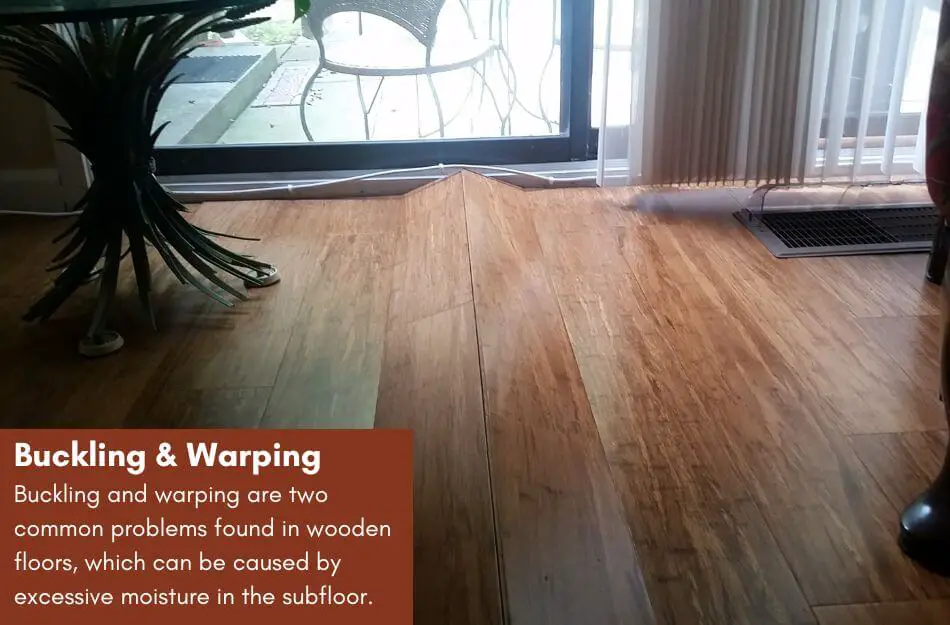
If not, this problem will soon arise as moisture accumulation in the subfloors is quite common.
However, if you live in an area with a very high humidity level, you might face the same problem, as the wooden floors can also buckle and warp when there is high humidity.
In buckling, the edges of the planks lift and overlap other planks, forming a buckle.
While warping refers to the condition when the moisture is too less, and the wood shrinks more than usual.
This might result in excessive gaps between the planks, which are easily visible to the naked eye and will not only destroy the appearance of the floors but also expose the subfloors to many possible dangers.
Buckling usually occurs in summer when the high heat and moisture content makes the wood warm and moist, expanding and taking up more space.
Whereas warping is usually identified in winter due to the low temperatures and reduced moisture levels which soak up any water content from the flooring, making it slightly shrink.
This is why flooring boards are placed in menial spaces from each other.
However, during this process, some hardwood boards develop humps or swelling in either center or edges, while others lift at the edges.
In severe cases, the uplift of the edges can be too much, making you think that the floors are getting lifted from the subfloor.
Firstly, there are a few ways to avoid this condition and prevent this type of damage.
- Do not wet mop the floors excessively or too frequently.
- Clean up spillages immediately.
- Use humidifiers in winter to prevent shrinkage.
- Always use some heating system in the wooden flooring rooms.
Once you’ve taken care of these factors and the floors still do not revert to their original form, try the following methods, and you will be able to repair your floating engineered wood floors immediately.
Try placing a heavy object on the buckled area for buckled floors and gently slide the lifted plank into its place.
Then, use dehumidifiers, and try to soak up as much moisture as possible. Increasing heat and ventilation of the room is a good idea to remove excess water from the surface of the planks and the subfloors.
If you still have not seen any change, you might need to replace the planks; the process is mentioned later in the article.
As far as warping is concerned, the repairing process is relatively easy. Firstly, identify if you have the correct spacings for your floors.
If not, you might need to rethink about reinstallation of the planks in the correct dimensions.
However, for now, you must use humidifiers in the area and limit ventilation to a certain point. Besides, remember that the wood floors give up moisture due to heat.
Therefore, if you use heaters in winter, use a humidifier or a bowl of clean water near the heater to maintain moisture levels.
Infestations & Molds
If you have wooden floors, you would have countered the problem of constant molds, mildew, and seasonal infestations in the wood.
The dampness and darkness make the best environment for such activities, which may damage your floating wooden floors severely.

If there are molds and mildew, you should be certain that there is excess moisture in the area, which needs to be tackled immediately.
Some common problems caused by these situations are:
- Fungal spores
- Molds
- Bacteria
- Other visual unpleasantries
These can be a real nuisance and might degrade the quality of your wooden flooring.
Therefore, it is necessary to tackle them right before they eat away your entire wooden floors, so you have to get them replaced.
If you have infestations in your wood and have noticed them in the early stages, you can use some home remedies, but it is better to get the area fumigated to get rid of these issues once and for all.
However, if you have molds in the engineered wood flooring, there is no way to remove them except cleaning with acidic cleaning solutions.
You might even have to strip off the boards and remove these from the subflooring structure if necessary.
This is because battling the source is essential; otherwise, they might come up again.
However, if the situation is too bad and your flooring specialist suggests that it is beyond repair, the only solution you would have is to eliminate the source of the problem and get the damaged planks replaced.
Chipping
Another common problem engineered floor owners face is the chipping issue, in which the planks tend to crack easily when a tapping block and mallet are used.
The most common reason behind this is the poor installation which does not allow the planks to settle down properly and may result in damage caused by chipping.
The flooring is made from thin materials, so it can’t bear much force through hammering. Therefore, a tapping block and mallet join the planks together.
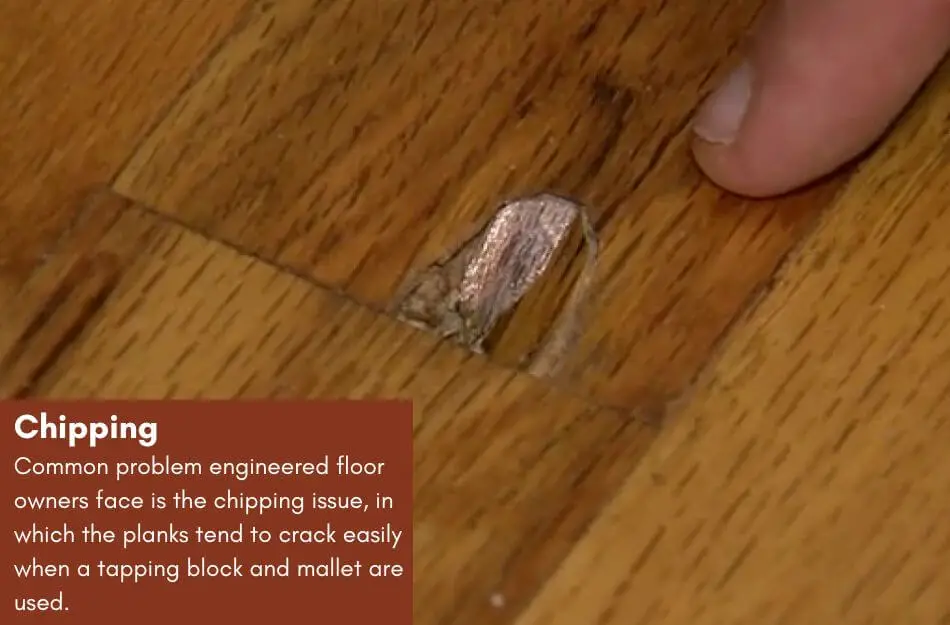
But when the planks are not installed properly, they might receive improper pressure, resulting in chipping.
Another possible reason for chipping is when you vacuum the floors with a beater bar vacuum attachment.
This is not recommended for wooden floors as it can damage and weaken the surface.
Moreover, if the damage is extensive, the water can seep into these areas and give birth to various other problems and issues such as mold, mildew, and many other problems.
Some of these have been stated above to understand better what happens when the moisture content increases inside or around the wooden floors.
However, coming back to the main problem, let’s find out how to fix this problem.
While it is recommended that you get proper installation so this problem does not occur in the first place, you can take a few measures to repair this damage.
It is advised that you get a flooring professional to fix this problem as it is a bit tricky, and if you do not have any experience in the field, you might damage the floors even further.
However, if you are still persistent, here is an easy way to fix it:
- Take the chipped pieces of wood and save them.
- Apply wood glue to the area where the wood is chipped and on the chipped piece.
- Please put it back together and keep some light pressure until it dries.
- If the piece doesn’t fit back, fill the area with epoxy fillers.
- Stain the epoxy once dried to get a color and texture similar to wood.
- Cover the site with wood tape to make it blend if it still stands out.
Replacing The Damaged Boards
If your engineered wood floating floors have some planks damaged beyond repair, you do not need to replace the entire flooring.
First, you need to remove them immediately so they do not further damage the other boards in the vicinity.
Once this is done, you can quickly move on to the next repair phase and install the new planks.
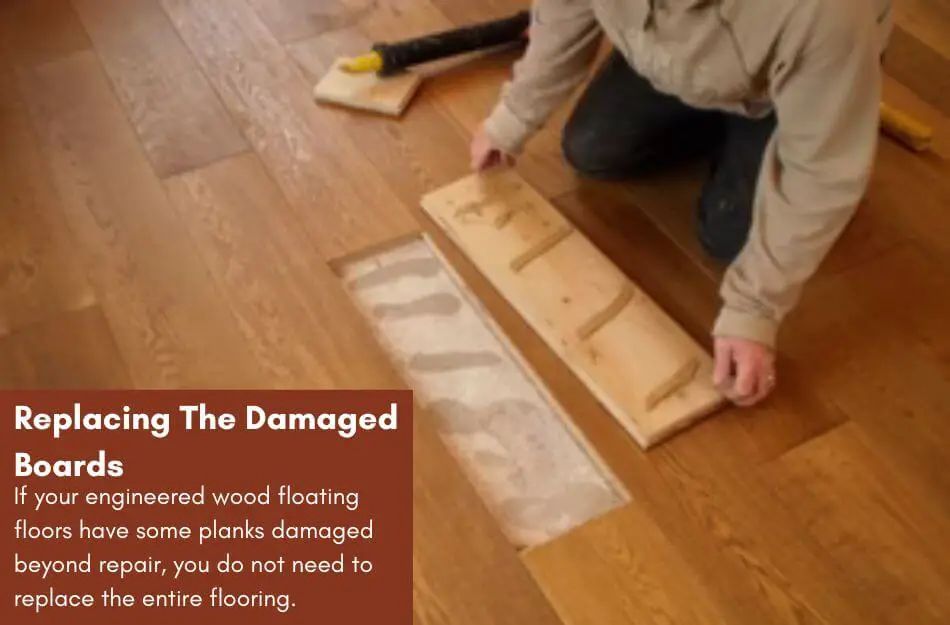
Here is an easy method to remove the planks from the floating floor.
- Mark a side of the area along the edge and then adjoin these to two other markings along the length of the plank.
- Make sure you develop a distance of half an inch from the longboard edges so you do not end up damaging the other planks and scratching or cutting them accidentally.
- Then, you need to cross-cut the center of the area at an angle. Follow this method to get them removed:
- Use a pry bar, chisel, and hammer to remove the damaged board. Place the chisel at a 45-degree angle against the boards, then put slight pressure on the hammer until the board emerges.
- Another way to remove the boards is to break the cutting kerfs at the ends. This will allow the chisel to cross-cut directly through the center.
- Repeat the same method for all the boards you need to replace.
Once this is done, your damaged planks will be removed so you can address and solve the underlying issue.
Once done, you can place the new plank in the area but remove any remaining pieces of the wood and clean the area.
Conclusion
In case you also have a damaged floor in your house, it is necessary that you repair it immediately so the damage doesn’t get beyond repair.
Therefore, if you want to repair your floating engineered wood floors, make sure to follow the steps mentioned above so you can restore the original appearance of your floors.
John Henry is a passionate co-creator of FlooringFlow.com. a website dedicated to answer all of your flooring related questions. After taking the challenges of flooring DIYs while learning skills for years, John is now ready to share his knowledge related to floor remodeling and projects with you.

